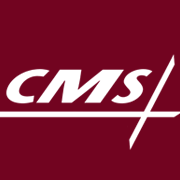CMS Hinders Private Plan Steering for Claims Reimbursement Bump
A new CMS rule will attempt to prevent providers from steering patients into private plans for higher claims reimbursement rates.

- CMS recently released an interim final rule designed to prevent providers at Medicare-certified dialysis centers from inappropriately steering patients away from Medicare and Medicaid in order to get higher claims reimbursement rates under the Affordable Care Act’s individual health plans.

Under the new rule, Medicare-certified dialysis centers that make direct or third party payments for individual coverage must annually inform their patients about their coverage options. The centers must disclose how individual market plans would affect a patient’s access to and costs for end-stage renal disease (ESRD) services compared to Medicare and Medicaid.
Dialysis centers are also required to educate patients about their premium assistance programs, including any payment limits in place, as well as how the center is reimbursed for ESRD services after subsidizing enrollment.
In addition, the rule contains requirements for insurer education. Dialysis centers must inform individual market insurers about their direct or third party premium payments and receive word from insurers that they will accept the payments throughout the plan year.
If insurers refuse to accept the payments, then the center cannot pay for individual premiums.
Currently, individual market insurers only need to accept third party payments from Ryan White, government, and Indian tribe programs.
The rule stems from an August request for information from CMS. The federal agency investigated claims that some healthcare providers and provider-affiliated organizations, particularly dialysis centers, were encouraging individuals to enroll in Affordable Care Act individual market plans rather than Medicare or Medicaid to reap higher claims reimbursement.
Providers may be incentivized to take on more patients enrolled in individual market plans because they have higher claims reimbursement rates.
For example, dialysis centers can get claims reimbursement rates from individual health plans that are as much as four times higher than Medicare and Medicaid rates, according to the final rule’s fact sheet. The higher rates result in a $100,000 to $200,000 difference per patient per year.
To encourage more patients to enroll in the individual market plans, many providers and provider-funded organizations have offered premium payment assistance.
After its investigation, CMS found that dialysis centers were more likely to inappropriately steer patients towards individual health plans. Dialysis centers targeted ESRD patients because ESRD is the only health condition for which almost all patients are eligible for Medicare coverage. ESRD patients must also go to a dialysis facility several times a week for services for the rest of their lives unless they receive a kidney transplant.
“This sort of ongoing receipt of specialized care from a particular facility is not typical of most health conditions and it creates especially strong incentives and opportunities for dialysis facilities to influence the coverage arrangements of the patients under their care,” wrote CMS.
Additionally, CMS found that steering ESRD patients away from Medicare and Medicaid could negatively affect care. Patients may not receive a kidney transplant under an individual health plan because they cannot show that they will have continuous health coverage after the transplant. Many dialysis centers typically stop premium assistance after a patient undergoes a kidney transplant, thereby threatening the patient’s continuous coverage access.
Similarly, ESRD patients could face mid-year coverage disruption if dialysis centers cease premium assistance or insurers stop accepting the payments.
ESRD patients in individual health plans may also experience higher cost-sharing expenditures for non-dialysis services, which would have been covered by Medicaid. Although, CMS noted that some patients may have higher cost-sharing under Medicare, too.
The rule aims to protect ESRD patients from higher healthcare costs and limited care access, but a dialysis patient advocacy group recently expressed outrage with the new rule. The Dialysis Patient Citizens stated that the rule would “force patients off their current health plans and jeopardize their access to care” by giving insurers power to limit premium assistance payments.
“Insurers have a financial interest in restricting essential services to policyholders who they know are about to be thrown into Medicare," stated Hrant Jamgochian, Dialysis Patient Citizens Chief Executive. “This rule will encourage insurers to limit patients' choice of insurance plans and obstruct their access to critical care, such as a preemptive kidney transplant, surgery for a fistula to ensure safe dialysis, or even patient education about measures to help delay or avoid kidney failure.”
On the other side, some marketplace insurers may view the recent CMS rule as a win. Although CMS officially discourages insurers from accepting third-party payments, many insurers have complained to the federal agency that third party premium payments destabilize the Affordable Care Act risk pool.
High-cost and sicker patients should be covered by Medicare and Medicaid, some insurers argue, but they have been guided to individual health plans, causing insurers to boost premiums for policyholders.
CMS will accept comments on the rule for the next 30 days.
Dig Deeper:
• Key Ways to Improve Claims Management and Reimbursement in the Healthcare Revenue Cycle
• How Payers Could Succeed in ACA Health Insurance Exchanges
